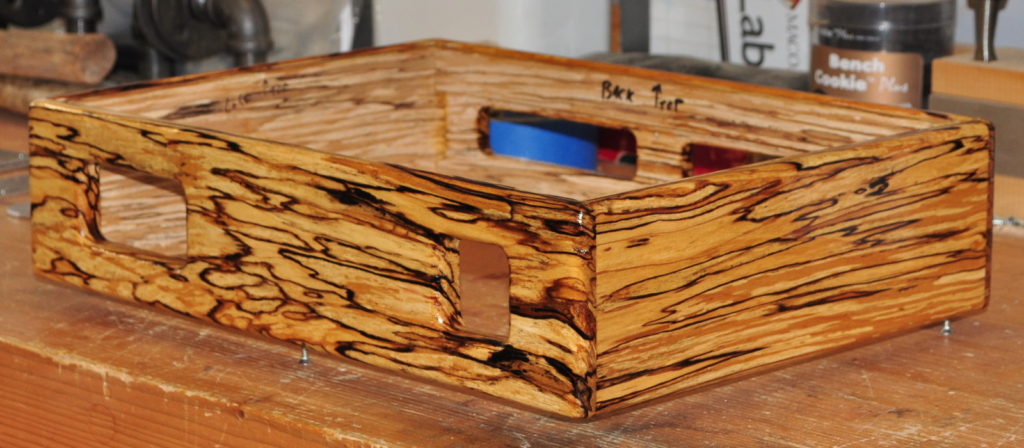I now have five coats of oil on the amp chassis and the color is incredible. But this finish isn’t going to be like the last couple of projects. The wood is just too different.
Here is the chassis with the current five coats of oil.
The fifth oil coat is still fresh in this picture. The color and tonal palette just continue to improve. But this chassis is a little different.
Unlike the 6AS7 SET purpleheart chassis or the 6CY7 V2.0 Zebrawood chassis, this chassis is spalted Alder. This makes the chassis wood very different. First, Alder is not nearly as hard or as dense as either purpleheart or zebrawood. It’s a softer wood with real differences in hardness and density. This means that the wood develops a grain texture during sanding and finishing. On those other two amps the wood was glass smooth when the oil first went on, and it stayed that way through many coats of finish. This chassis shows a physical grain pattern so the texture and hand feel are very different.
The other item that makes this wood very different is the fact that it is spalted. Spalting is actually caused by a fungus that breaks down the structure of the wood. As the fungus spreads, it follows grain structures and leaves behind fungal colonies that stain the wood. However, the fungus requires very high moisture levels (>25%) and temperature ranges between 70°F and 100°F (21°C and 38°C) to survive. Now that the wood has dried to about 10% moisture, the fungus that causes the spalting is dead. However, the structural damage to the wood remains.
This means that in addition to the grain texture I discussed above, the wood is also prone to small dents and handling marks as I’m working with it. At first this worried me. However, once I realized that the finish was intact over these minor marks, I decided that it will just one more feature that contributes to the look and feel of the chassis.
The other benefit of the oil is that it penetrates the wood. As it cures from the oxygen in the air, it hardens. This means that the oiled surfaces of the chassis are actually getting harder and less susceptible to these minor dents and marks. The effect is something akin to the color case hardening which was applied to classic firearms to improve action strength.
I haven’t made a final decision yet, but I think I’ll add at least three more coats to the finish. Once that’s done I can get back to work on the metal which isn’t even completely drilled and formed yet.
As always, questions and comments are welcome.


Thanks for the comment about color case hardening. I had heard of this for metal, but I had not thought of it with wood.
This will certainly look spectacular with the black top